Phan Thiet is a provincial political, eonomic, cultural and technological center of Binh Thuan Province. Phan Thiet has National Highway 1A with the length of 7 km passing through the city. The administrative center of Phan Thiet City is about 183km from the administrative center of Ho Chi Minh City to the northeast. Phan Thiet is the city located at the end of the South Central Coast in South Central Vietnam. By 2025, Phan Thiet will be the urban area of the Southeast Vietnam. The natural area of Phan Thiet is about 206.45 sq. km with a long coastline of 57.40 km.
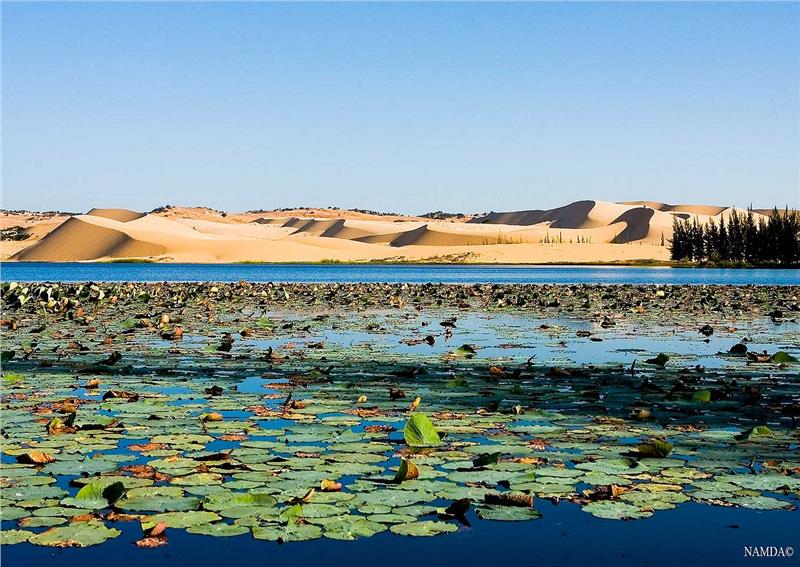
The arch-shaped Phan Thiet City stretches from 10°42'10" to 11° north latitude. The city is adjacent to the South China Sea in the north, south and east, Ham Thuan Nam District in the west and south, Ham Thuan Bac and Bac Binh districts in the north. Phan Thiet City is divided into two parts by Ca Ty River: trading area in the south (Phan Thiet Market) and new administrative and military centers built in Phu Thuy and Xuan An wards in area of 300ha with new buildings of commercial centers, and residential area with a capacity of 50,000 people, along with areas of service and schools.
Phan Thiet has a relatively flat terrain with sand dunes, coastal sands, low sand dunes, and narrow coastal plain. There are three main areas in the city: Ca Ty River Delta, sand dunes area, and area of coastal sands. Phan Thiet City is located in arid regions with typical tropical climate. Weather in Phan Thiet is windy, sunny, and less stormy. It has an average annual temperature of 26 °C to 27 °C. January, February and December have an average temperature of 25.5 degree Celsius. During this time, it is cooler than other month April and May are the hottest months in Phan Thiet. The temperature can reach 29 °C. Annual relative humidity averages from 78 to 80.7%.
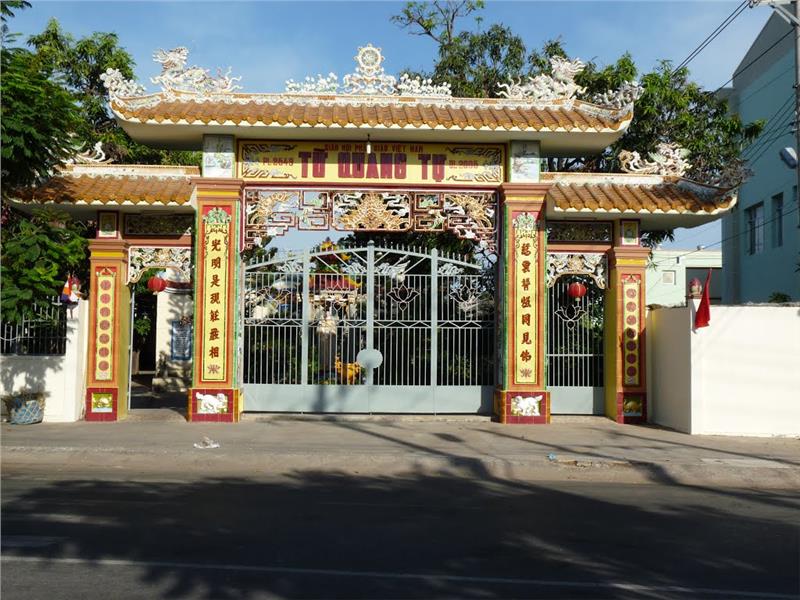
This area belonged to the ancient kingdom of Champa. Then, it merged into the Dai Viet Kingdom. The administration of Phan Thiet was established at the same time with the formation of present-day Binh Thuan Province. In 1697, Phan Thiet was officially recognized as an administrative area along with Phan Rang, Pho Mai, and Ma Ly in Tam Tan. However, the territory of Phan Thiet was not documented until 1999. During 1773 - 1801, Phan Thiet was the battlefield where fierce fightings between Nguyen Dynasty and Tay Son Dynasty took place. From 1825 to late 19 centuries, Phan Thiet had not been recognized as an offical part of Binh Thuan.
In 1905, the city was not clearly defined its boundaries. In 1910, it officially included 16 villages (on the right side of Ca Ty River: Duc Thang, Thanh Duc, Nhuan Duc, Nam Nghia, Lac Dao, and Tu Long; on the other side: Long Khe, Phu Trinh, Trinh Tuong, Dang Binh, Quang Binh, Thien My, Thien Chanh, Xuan Hoa, An Hai, and Son Thuy. In 1999, Phan Thiet was recognized as the provincial city of Binh Thuan by Vietnamese government. In 2009, the Prime Minister issued Decision 890/QD-TTg which recognized Phan Thiet City as level-2 city of Binh Thuan. In spite of a newly-emerging city, it is believed that "ancient" Phan Thiet City was formed earlier than Nha Trang and Phan Rang.
After being recognized as a city by the government in 1999, Phan Thiet is divided into 18 administrative units including 14 wards (Mui Ne, Ham Tien, Phu Hai, Phu Thuy, Phu Tai, Phu Trinh, Xuan An, Thanh Hai, Binh Hung, Duc Nghia, Lac Dao, Duc Thang, Hung Long and Duc Long) and 4 communes (Nam Phong, Tien Loi, Thien Nghiep, Tien Thanh).
Phan Thiet is populated mostly by Vietnamese people. There is a part of Chinese people living in the city center, mostly in Lac Dao and Duc Nghia wards. The population of Phan Thiet, according to the statistics of Binh Thuan province, is 216,578 people (in 2004). The population density is 1,051 people/km² throughout the city. Specifically, in the downtown areas as Duc Nghia, Duc Thang, Lac Dao, Hung Long, and Binh Hung wards, the population density is 30,000 people/km². The population of Phan Thiet is larger, at about 250,000 people due to the residence of people from other reigons in Vietnam.
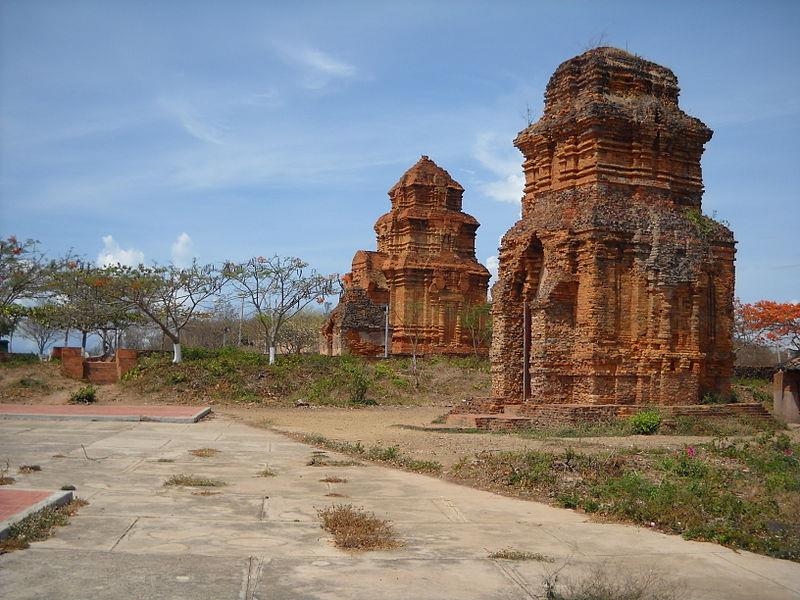
Culture in Phan Thiet is portrayed by Cham Culture. Phan Thiet is also the convergence of people from everywhere in Vietnam and in other neighboring countries. Thus, cultural customs in Phan Thiet are various, especially the customs of worshiping the marine God of fishing villages from Mui Ne to Duc Long. Many ancient communal houses in Duc Thang, Duc Nghia, and Thuy Tu built from 18th and 19th centuries are recognized as national heritages. For a long time ago, people in Phan Thiet has been familiar with and had a profound awareness about community life. One of the most outstanding cultural features of Phan Thiet people is some types of folk singing (Hò bã trạo, hô bài chòi, hát bộ, ca cải lương, etc.). Apart from Cham Culture, culture in Phan Thiet is also influenced by culture of Chinese people living here. Ong Temple is the most outstanding folk architectural cultural features of Chinese people. In Phan Thiet, Catholicism is popular in wards of Lac Dao, Thanh Hai, Phu Thuy, and Hung Long.
There are 34 ethnic groups living together in Binh Thuan. The largest number is seen in Kinh group; followed by the Cham people, Ra Glai, Chinese (mainly in Duc Nghia Ward), Co Ho, Tay, Cho Ro, Nung and Muong, etc. Almost of people in Phan Thiet use Vietnamese language in communication and other socio-economic activities. A small number of ethnic minority groups speak Vietnamese as their second language.
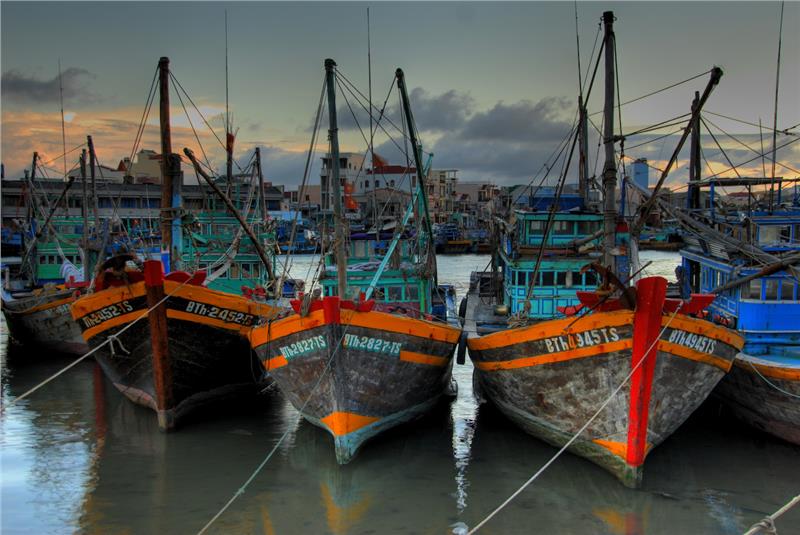
In the early years of the 21st century, economy of Phan Thiet had a high growth rate (14.04% per year). The economic structure shifts towards industrialization, tourism, agriculture, fisheries, and forestry. The economic potential is gradually effectively exploited. The economic sectors are encouraged to invest and to develop business. Phan Thiet has a 57.4km long coastline with great potential for development of salt industry and tourism. Marine resources are abundant and diverse with the mining capacity of 60 thousand tons per year. There are also abundant aquatic resource with high value, which can be exploited annually 600-700 tonnes of shrimp in all kinds, 3200-3500 tons of squid, 10,000-12,000 tonnes of scallops, oysters and other seafood.
Phan Thiet has ilmenit zircon mines in the coastal area of Ham Tien - Mui Ne with reserves of 523.5 thousand tons. Mico-granite quarries in Lau Ong Hoang with reserves of 200,000 tonnes, whic can be used to produce porcelain enamel. Glass sand mines along coastal sand dunes have reserves of about 18 million tonnes. Offshore oil mines are discovered and in ongoing trials. Developed industrial parks are situated near Phan Thiet City center, on National Highway 1A and National Highway 28 (Phan Thiet - Lam Dong). It is 200 km from Ho Chi Minh City, 250 km from Nha Trang, 150 km from Vung Tau and 165 km from Da Lat. In addition, inner city also has facilities of food industry, seafood processing, and handicrafts.
Fishery is the oldest industry in Phan Thiet. Along with La Gi and Phu Quy, Phan Thiet is the largest fishery in Binh Thuan. In parallel, Phan Thiet is endowed with favorable climatic conditions to produce fish sauce. Temperature variation between months is not big. It is less rainy, more sunny and windy, which is an ideal condition for the natural ripening process in salt of fish. Thus, Phan Thiet fish sauce is flavored with a unique feature that can be found no where. Phan Thiet has 260 hectares of water surface which is used for shrimp, salt farming, 140 of which is shrimp farming. Phan Thiet has a long coastline with beautiful white sandy beaches and clean environment like Doi Duong Beach along with wonderful seascapes and landscapes such as Poshanu Tower, Lau Ong Hoang (Emperor Palace), and Suoi Tien (Fairy Spring), Rang - Mui Ne coconut forest, Tien Thanh, and Duc Thanh historical relics.
Like other cities in Vietnam, Phan Thiet is controlled under the administration of Binh Thuan Province. Phan Thiet City in particular and Binh Thuan in general plays an important part in the politics in South Central Vietnam. It is also the gateway between South Central Vietnam and Southeast Vietnam.
Society
Under the French colonial period, Phan Thiet was divided into two distinct living areas: wards around Ca Ty River’s estuary, and coastlines of Hung Long, Binh Hung, Duc Thang, and Lac Dao. Here are places of wharfs full of boats and ships. Local people's life depends on fishing and producing fish sauce. Duc Nghia Ward becomes the urban center with bustling commercial activities. Here is also the residence of Chinese people. Before 1965, the left bank area of Ca Ty River, there was a sparse population. Only government offices were placed, such as provincial Residency, post office, hospital and railway station, etc.
Tourism
Phan Thiet Bay is relatively shallow and windy, which is suitable for many types of sea sports preferred by foreign tourists. Phan Thiet not just has advantages of sea, but also the existence of beautiful landscapes, architectural monuments, historical and cultural relics, and folk traditional and modern festivals.
Historical relics
- Duc Thanh School founded by patriotic scholars is a famous attraction in Phan Thiet. The President Ho Chi Minh used to teach here for a short period before moving to Saigon.
- Poshanu Tower relics are remains of the ancient Cham Kingdom. It is located in Ba Nai Hill of Phu Hai ward, about 7km from Phan Thiet City to the northeast.
- Ta Cu Mountain Pagoda is a pagoda in Ta Cu Mountain at an altitude of over 400m. This pagoda is a national historical cultural relic of Vietnam.
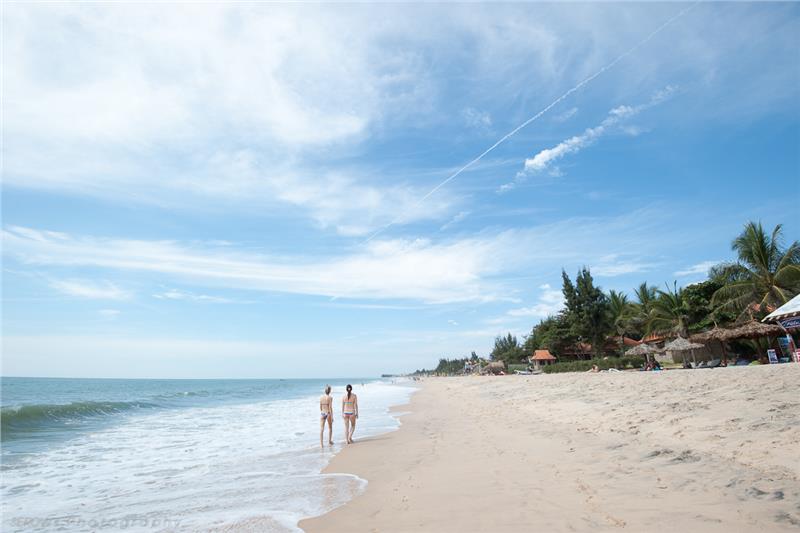
Beautiful landscapes
Mui Ne: Renowned for vast sand dunes and favorable facilities for sea sports, Mui Ne is only about 4 hours of driving from Saigon. Mui Ne provides tourists with diverse accommodations. Here is also a perfect destination for beach holidays in Vietnam.
Hon Rom tourist attraction: is still an unspoiled place in Phan Thiet. With beautiful scenery, and over 17 km long beach, Hon Rom – a pristine and uninhabited place appeals a large number of tourists.
Phu Quy Island: in this island, there are large temples and pagodas such as Linh Quang Pagoda and Cao Cat Temple which are recognized as national historical and cultural relics with the coastline with white smooth sandy beaches and turquoise water
Other beautiful landscapes: Lao Cau Island, Fairy Stream, Doi Duong Beach, Vinh Hao – Tuy Phong tourist site, Bien Lac Lake, and Phan Thiet Water Tower, etc.
Entertainment
“Western Street” on Nguyen Dinh Chieu Street: this street is quite narrow, but it is has great advantages of beautiful beach with modern system of resorts and hotels on the right, while on the left there is a series of restaurants, souvenir shops, and other shops. Fast food and seafood restaurants mostly place in this area. These restaurants have diverse styles from European-style bars to Asian architectural restaurants with professional staff. Despite being less bustling than Western Street in Ho Chi Minh City or in Nha Trang, almost foreign tourists like the atmosphere here. Modern resorts in Mui Ne are quiet spacious, offering a full range of games and entertainment for tourists, especially foreign tourists such as equipment of rubber boats, surfboards, swimming buoy with rescue team professional.
Festivals
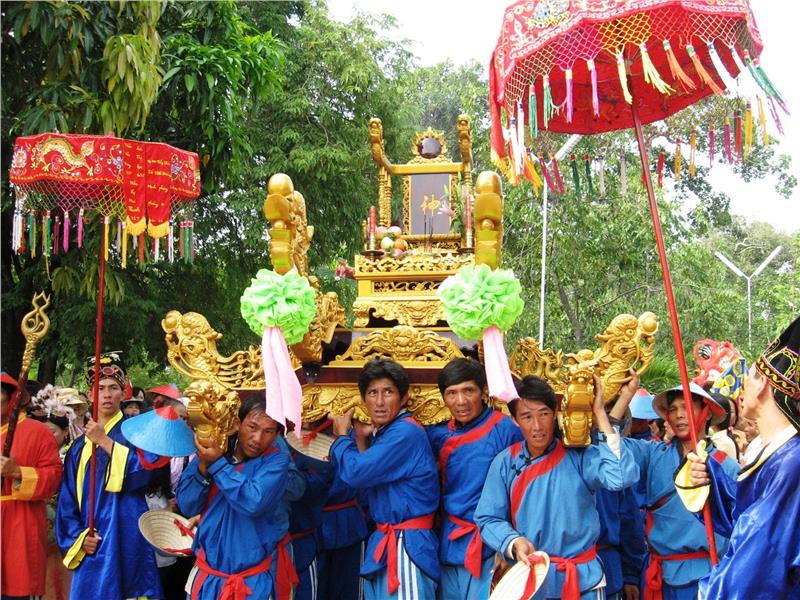
There are many interesting traditional festivals in Phan Thiet such as Boat Racing Festival in Ca Ty River, Nghinh Ong Festival, and Thay Thim Festival. The Boat Racing Festival in Mui Ne is held in the second day of the first lunar month. This festival is organized in Ca Ty River to celebrate the New Year. Meanwhile, Nghinh Ong Festival is the festival of Chinese people in Phan Thiet. This festival has an age of nearly 200 years. It is held every two years. They celebrate this festival to commemorate their deity (Quan Thanh Đế Quân in Vietnamese). This festival has a great folk cultural meaning which reflects the wish of peace, happiness and wealthy life. Thay Thim Festival in Phan Thiet is one of rare southern festivals listed in Vietnamese festival “dictionary”. This festival takes place annually in the ninth lunar month, in poetic scenery of Phan Thiet with unique features. Thay Thim Festival increasingly entices many tourists to participate in. The festival lasts for three days (from the 14th -16th days of the ninth month in lunar calendar).
